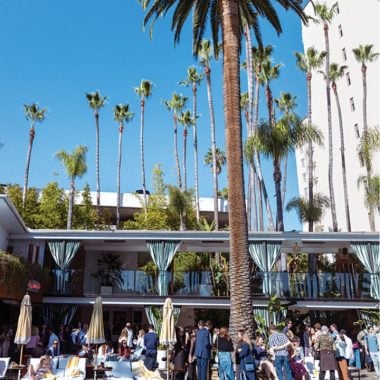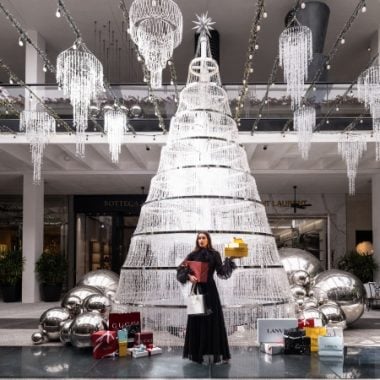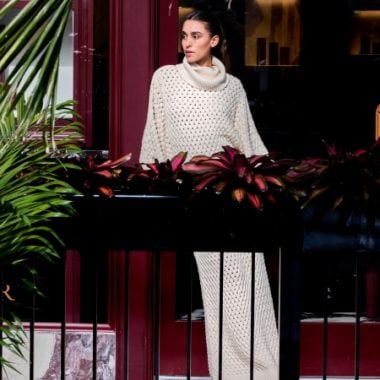By Jay Cheshes
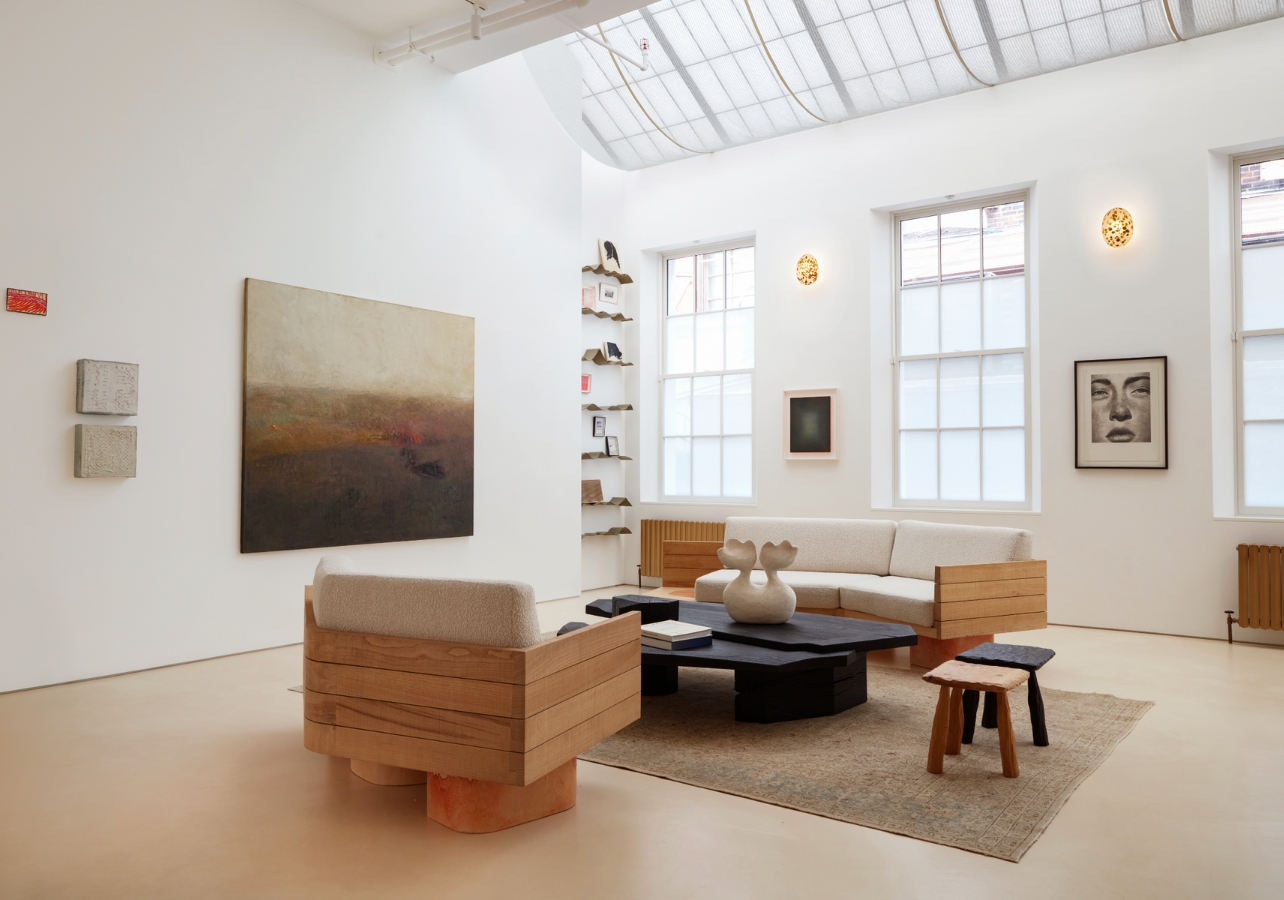
Amelie, Maison d’art’s Mercer Street gallery in New York. Photo by Gaelle le Boulicaut.
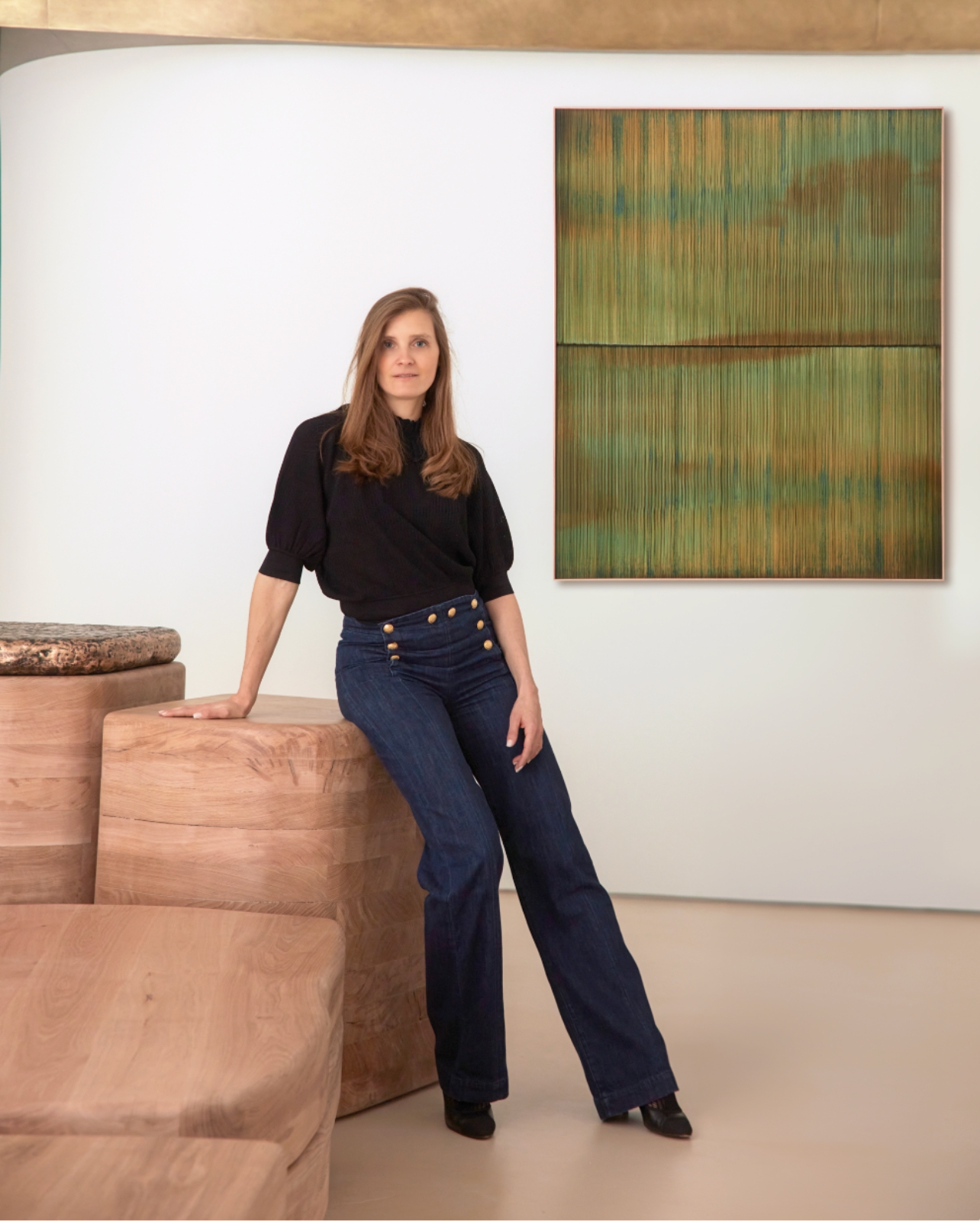
Amélie du Chalard in front of an artwork by Jean-Philippe Lagouarde and furniture from Linde Freya.
Before she opened her Paris gallery nine years ago, Amélie du Chalard had no art world experience. After years working in finance, she’d been considering a career change when she began to notice many of the small galleries she enjoyed frequenting in her neighborhood on the Left Bank of the Seine closing up shop—and yet, she observed, the Paris art scene was still booming. “I was trying to understand why you have maybe ten, fifteen big galleries that are very successful—Perrotin, Hauser & Wirth, Gagosian, et cetera—and then these very tiny ones, very artisanal, struggling without much visibility, and nothing in between,” she says.
Using her business skills, from her years working in mergers and acquisitions, du Chalard conducted her own market study of the small galleries she loved. Their problems, she found, lie in their modest spaces, narrow focus, price opacity, and often elitist demeanor. “I thought all you have to do is change all those things,” she says. Recalling the deals she’d done for fashion brands like Sonia Rykiel and Isabel Marant—“accessible luxury,” she calls them, in between the “Chanels and the Zaras”—she saw a similar void in the middle of the art market and set out to fill it.
“I’m not really risk-averse,” says du Chalard. “I figured, if I fail, I can always go back into private equity. I gave myself a year to succeed.” Today, du Chalard has built a thriving, disruptive enterprise with 20-plus employees, galleries in Paris and New York, and her own artist residency in Provence and studio space for young artists in Paris. A side business curating corporate collections works with luxury hotels, like The Emory in London and The Lana in Dubai, along with fashion retailers like Dior. “The idea is to create the best collection for the place with the best story,” she says, sitting in her flagship gallery in an 18th-century hôtel particulier just off Saint-Germain-des-Prés.
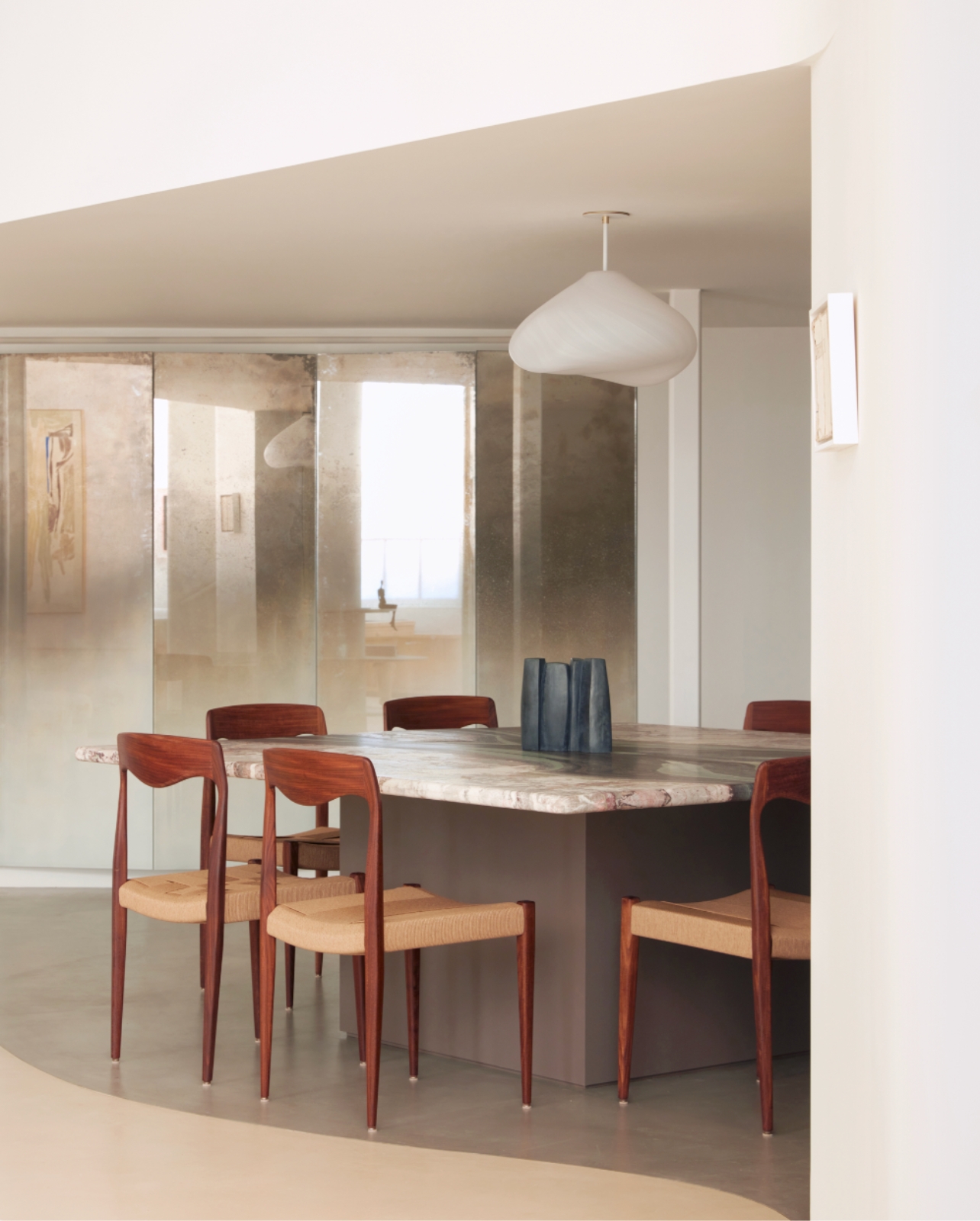
Chairs by artist Lena Morelli; the sculpture is by Anouk Albertini.
Amelie, Maison d’art, as she christened her enterprise, focuses on “works you want to live with,” mostly abstract art, in every medium, and across price points, from a diverse roster of 100 international artists, presented in a residential setting with a very bespoke client approach. On view during a recent visit to the Paris gallery are wood wall hangings from French artist Francis Limérat, chiffon tableaux from Belgian photographer Alex De Bruycker, and sculptural vases from Japanese ceramicist Kazunori Hamana, all mixed in with contemporary furniture that was custom-made for the space.
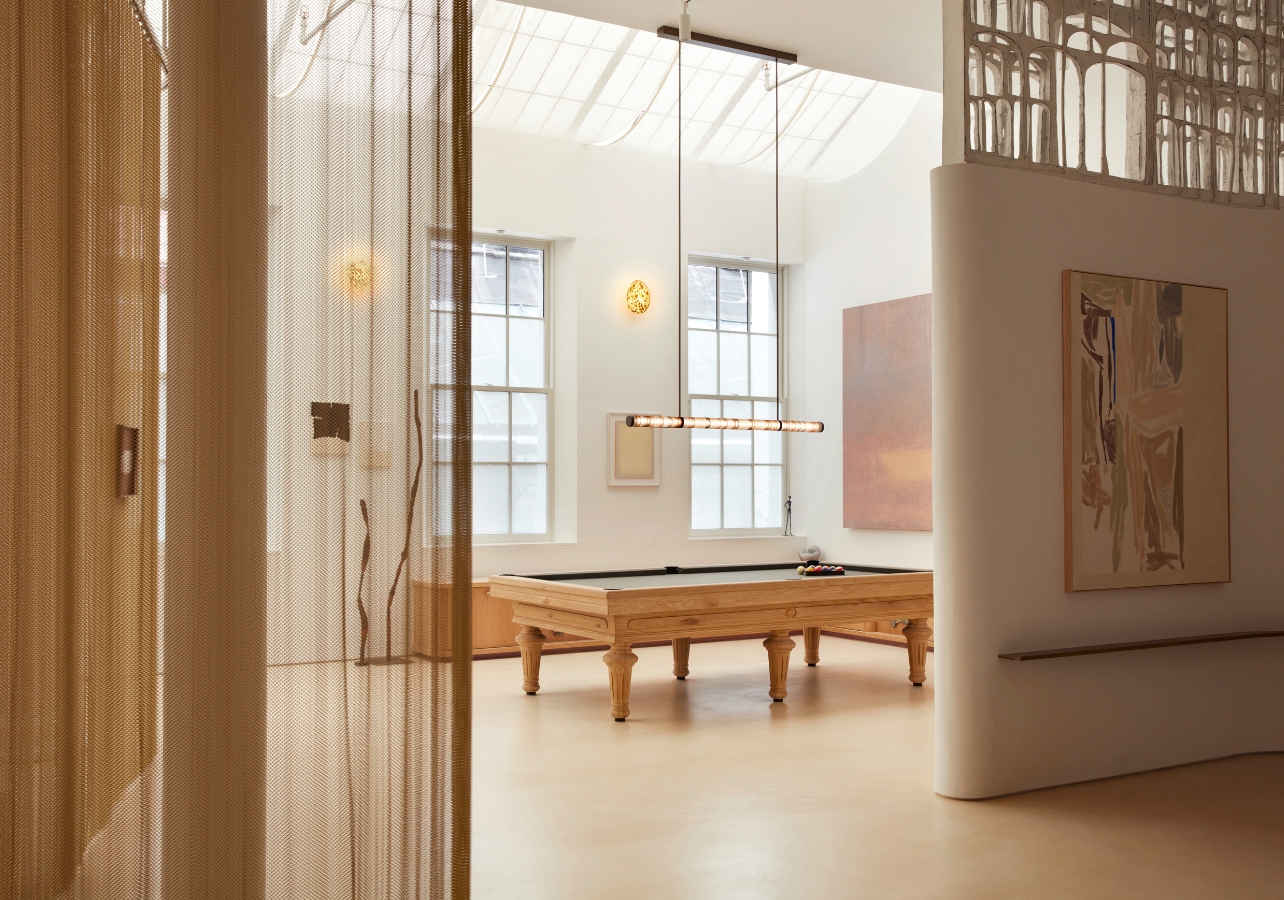
In New York, a chandelier by Jeremy Maxwell Wintrebert hangs above the pool table.
“You don’t have to present only one artist,” says du Chalard. “We want to show that everything fits well together when it’s selected by the same eye.” Prospective buyers, by appointment, get “personalized hangings” of the art they want to see, curated from the full catalog of works (available on the gallery’s website, ameliemaisondart.com). The space is constantly changing. “We have three guys dedicated full-time to hanging art in Paris,” she says. “We are quite agile. Sometimes I say I am a logistician, first. The key to the business is very good logistics.”
The one-of-a-kind furniture in the Paris gallery and in its New York sibling, which opened in SoHo in April, is meant to complement the art—most of it not for sale. She hopes the domestic backdrop will both inspire and help take some of the pretense out of the art-buying experience. “In the bank where I worked, I was surrounded by people that had a lot of money, liked beautiful things, but never went to galleries,” she says. “They found them cold, intimidating.”
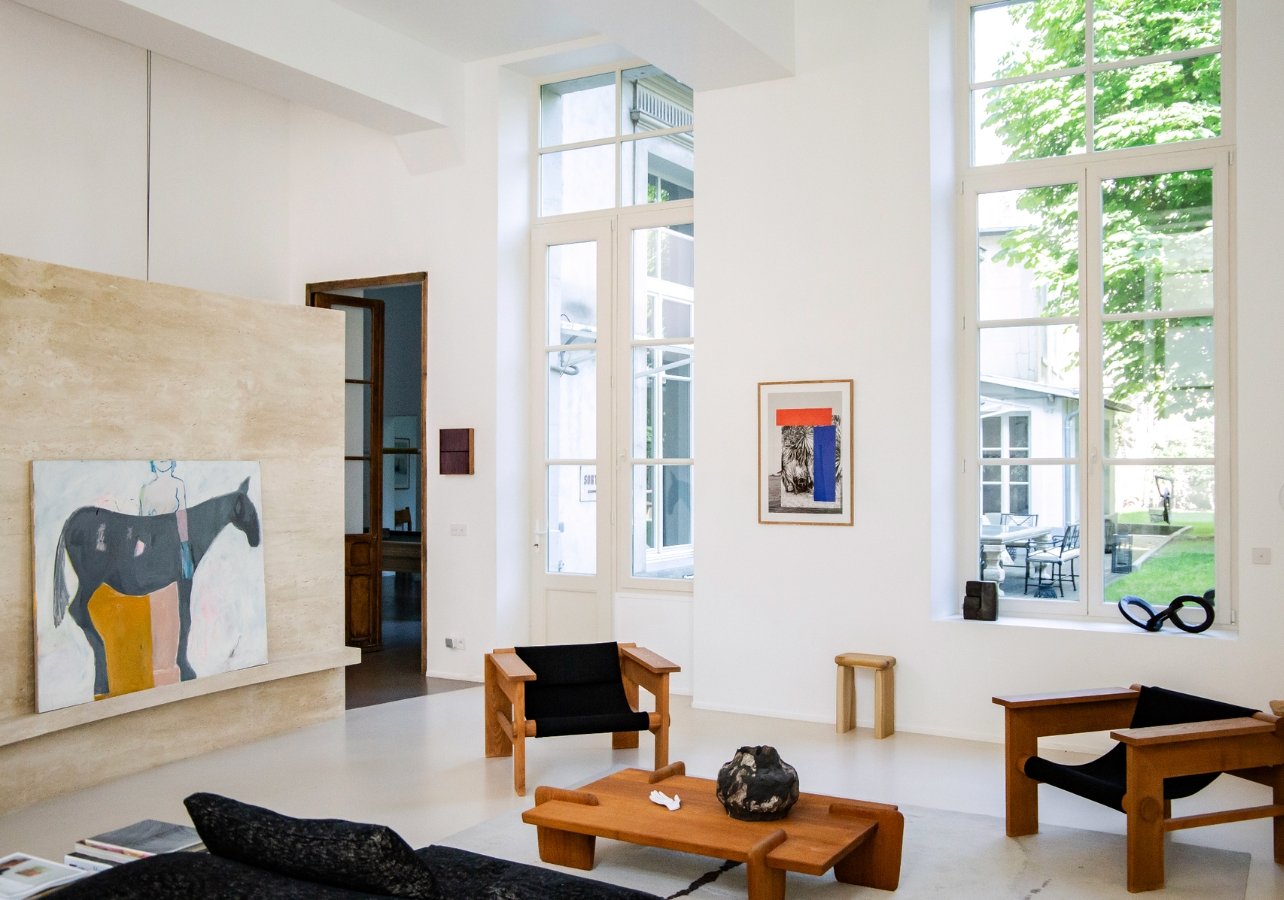
In the Paris gallery, a painting by Laure Carré sits on a travertine wall; on the back wall is a work on paper by Alice Quaresm.
Du Chalard’s isn’t the first business to blur the lines between the art and design worlds and to work in a residential setting. But while many enterprises, like Salon 94 and The Future Perfect, sell art and design together—working to erase the distinctions—Amelie, Maison d’art focuses almost exclusively on the paintings and sculptures it sells.
Du Chalard grew up in a home filled with art—her mother is a sculptor, her father a corporate lawyer who was also an avid collector—in the affluent 16th arrondissement of Paris. “It’s interesting to have grown up with these two pillars, one more business-oriented, the other creative, free,” she says.
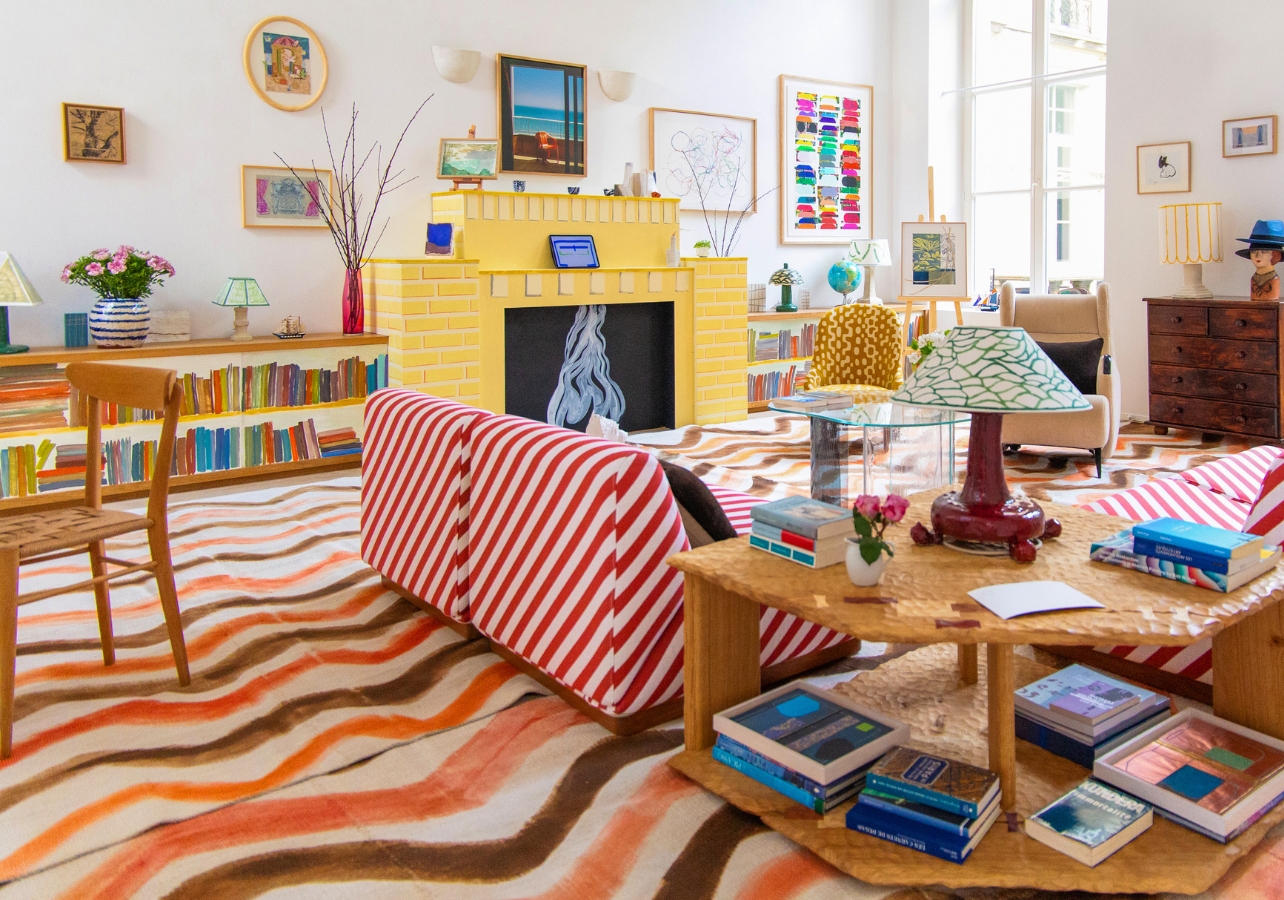
A recent design exhibition in Paris, “Interior with a Lamp,” was a tribute to David Hockney, recreating his painting with bespoke contemporary pieces.
After studying finance in Paris and in Seoul, du Chalard joined the M&A department at Rothschild & Co, working out of the investment bank’s Paris headquarters. Collecting became an obsession. “I spent all my money on art, buying emerging artists but also some famous ones,” she says. “Sometimes feel more American than French in my way of collecting. Very spontaneous; [if] I like it, I want it.”
In 2015 she left finance to open her first gallery near Montmartre (relocating to the Left Bank in 2021). Many of her early visitors assumed they were stepping into her home. “No, not my home,” she told them. “But I’m happy to hear you say that. That’s the feeling I was going for.”
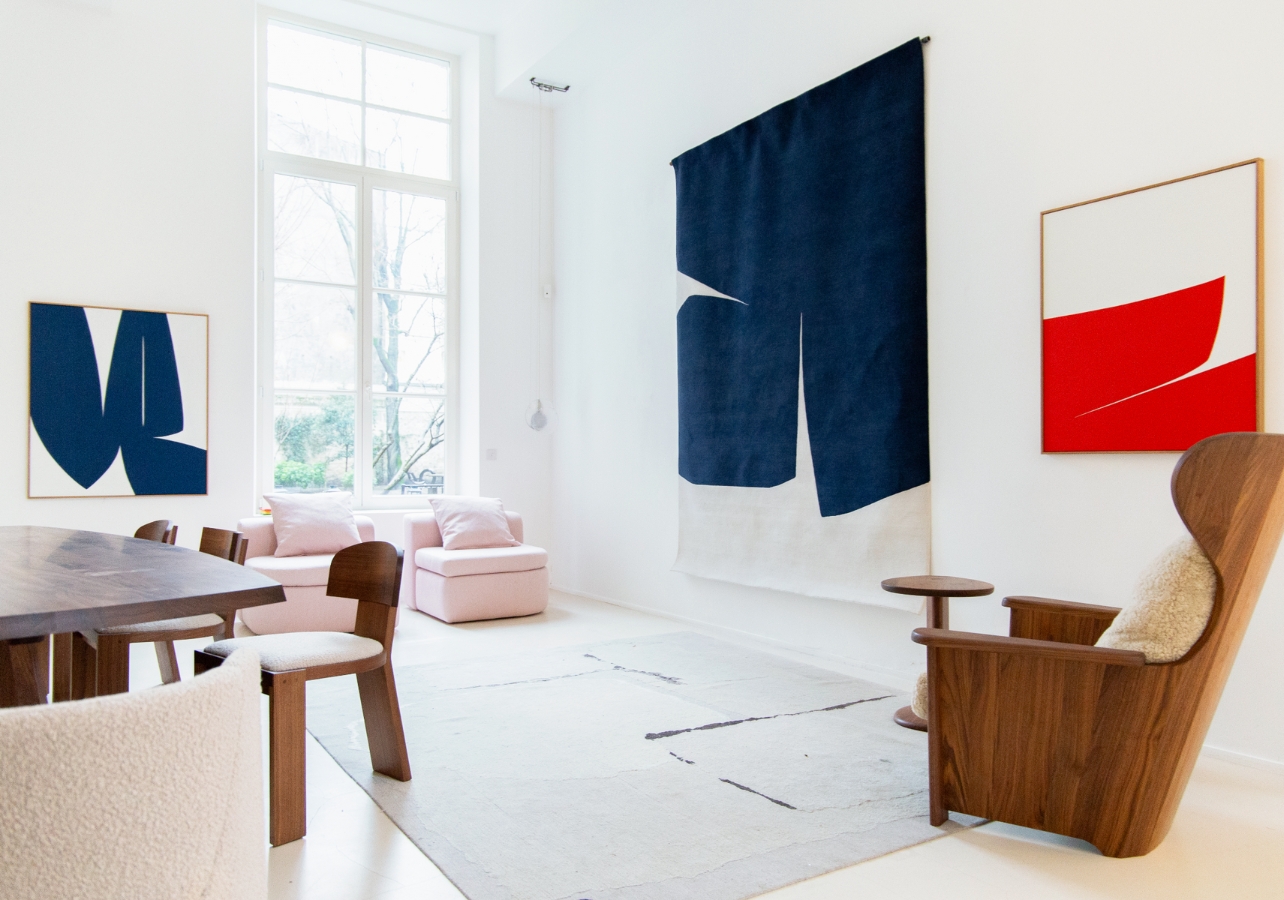
In Paris, works by artist Ludovic Philippon surround De La Espada furniture by Anthony Guerrée
She started with artists whose work she collected, and her first clients came from her personal network of bankers and lawyers. In a departure from the contemporary art world’s frequent focus on edgy, often transgressive, work, she filled her gallery with unapologetically beautiful things. “I didn’t do things like a regular gallery,” she says, “I did things in a way that could be seen as more decorative—it’s not my goal, but it could feel like that. In art, beautiful is a gros mot, a bad word. When it’s beautiful it’s not good.”
Despite her unconventional approach, or perhaps thanks to it, du Chalard says business is booming. In addition to the slate of fall exhibitions, look for a whole new collection of beautiful work from the gallery at La Fondation, the debut hotel project from New York architecture and design studio Roman and Williams, opening in Paris later this year.
All images courtesy of Amelie, Maison d’art.

